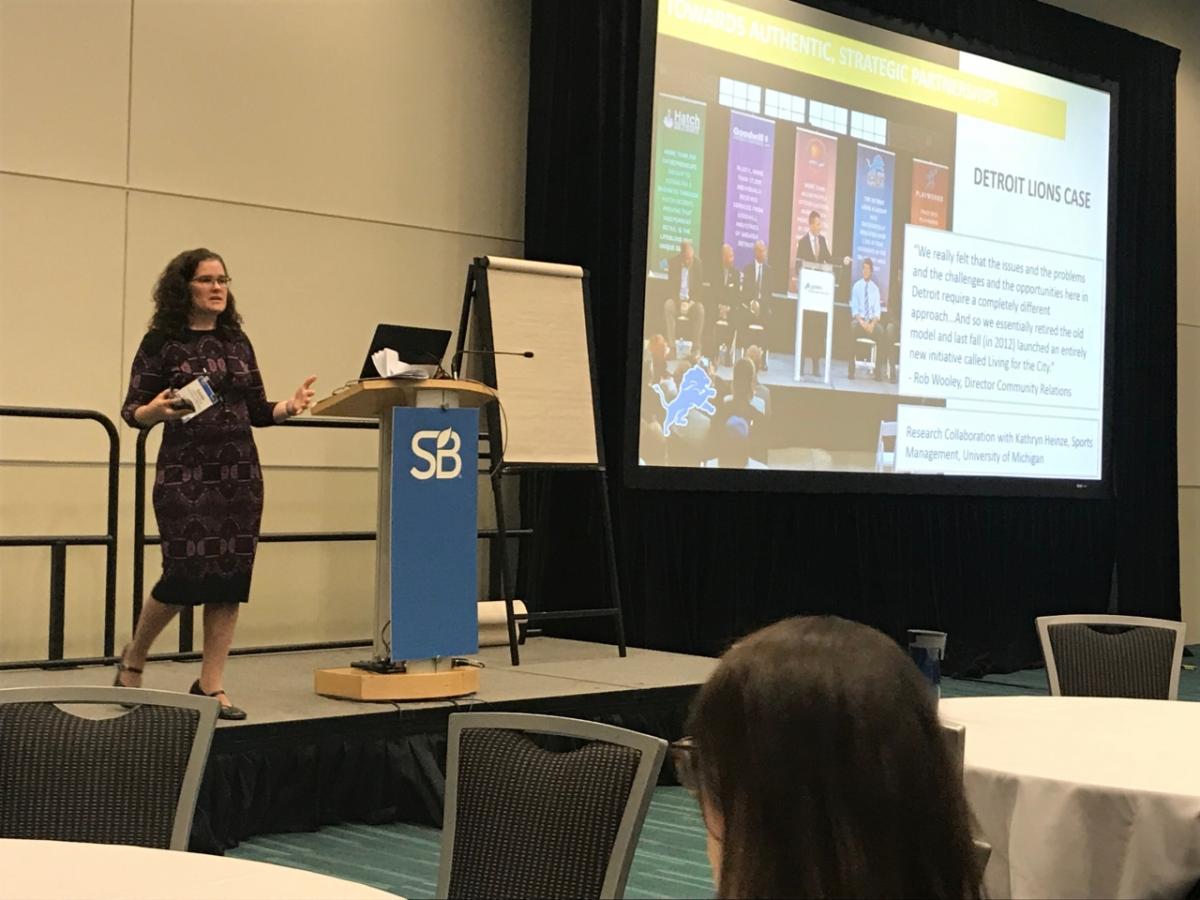Dispatches from the Sustainable Brands Conference - Vancouver 2018, Days 2-3
Erb Institute faculty Sara Soderstrom takes center stage at Sustainable Brands 2018

Purposeful partnerships
June 6, 2018
“Society is now expecting more from businesses,” said Sara Soderstrom, assistant professor of Organizational Studies and Program in the Environment at the University of Michigan, in the session “Company-Community Partnerships for Purpose and Sustainable Impact.” She explained that tensions exist between aspirations and objectives, and she used President John F. Kennedy’s approach to putting a man on the moon as an example: The aspiration was to advance science, and putting a man on the moon was an objective that served to advance science.
Soderstrom also highlighted how the Detroit Lions team has built partnerships to benefit Detroit residents—in ways that make sense for the Lions. The process has required the team’s humility in being willing to learn about the city’s needs, and the team has chosen partners that aligned well. For example, the Lions’ knowledge of health and wellness made them a good match for Playworks, an organization that helps kids stay active and build skills through play. This kind of match helps build sustainable partnerships.
Brands that take stands
On the third day of SB18, several companies served as examples of brands that take a stand—even when doing so is highly risky to their business. Jennifer Lindenauer, chief marketing officer at Upworthy, pointed to Patagonia’s bold message to the public on public lands—“The president stole your land”—and Dick’s Sporting Goods’ decision after the Parkland shooting to stop selling assault-style rifles and to stop selling any guns to customers under 21.
REI Vice President of Brand Stewardship & Impact Alex Thompson described the physical and mental harm that results when people don’t spend much time outdoors, and how the company set out to change that. With its #OptOutside campaign, REI offered consumers “the choice to do something other than consume,” and 700 organizations have joined in the initiative. He also explained that getting people outdoors transforms sustainability from a series of concepts into lived experiences. “You cannot paddle and not care about clean water,” he said.
A broad approach to design
June 5, 2018
The theme of SB18 is “redesigning the good life.” On the conference’s second day, Cheryl Heller, founding chair of the MFA in Design for Social Innovation, SVA, at Design for Social Innovation, explored the topic of social design and how it is creating new markets and more creative, engaged culture. Beyond logos and product design, she talked about designing what’s invisible and designing for relationships instead of transactions. She cited Airbnb as an example—its design “disrupts what we thought we wanted,” she said.
Heller also suggested a shift from trying to solve problems to figuring out what you want and then creating it, noting that real discovery sometimes requires not knowing the answers.
The anti-burger burger joint
A Swedish hamburger chain offered an example of a company making bold changes in its business, including going “climate positive.” Max Burgers measured its emissions and found that 53 percent of them were from beef. Even though the company’s core product is a classic beef burger, that burger is a “climate villain,” said Kaj Török, chief reputation officer and chief sustainability officer. So the company set out to reduce the number of beef burgers it sells and increase the number of other types of burgers.
Regarding carbon emissions, “going neutral isn’t enough,” Török said. The company recognized that it is part of the problem, so it wanted to be part of the solution as well. It is going climate positive by planting trees to capture the equivalent of 110 percent of its emissions. To educate and involve customers, Max Burgers put the climate impact of different menu options on the menu.

